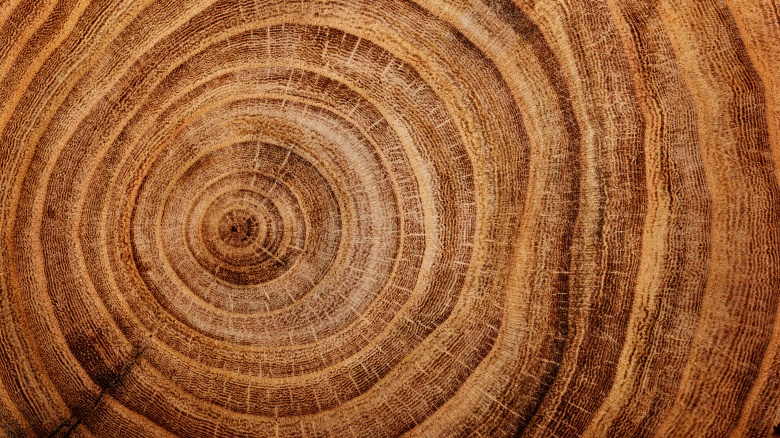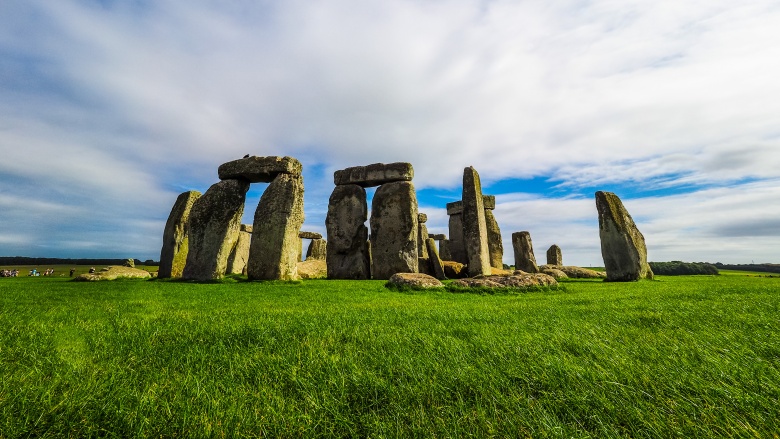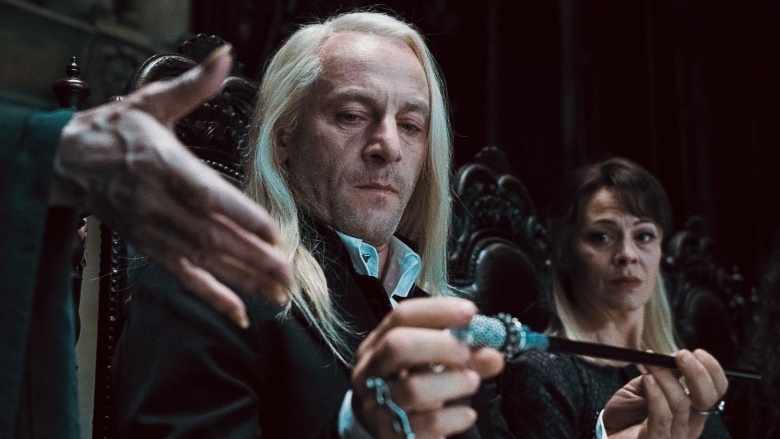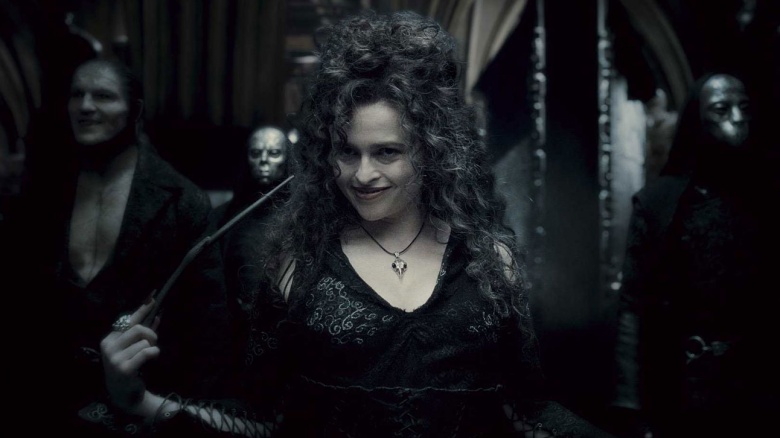Things You Didn't Know About Harry Potter Wizarding Wands
If you're even a casual fan of the Harry Potter films and/or books, you may know a little bit about the wandlore introduced by author J.K. Rowling. You might be aware that wandmaker Ollivander believes that "the wand chooses the wizard," or that the wands of both Harry Potter and Lord Voldemort share identical cores. But with such a wealth of information written by Rowling over the years, there's probably a lot more that you don't know about the wands used by wizards in Harry Potter and related stories. Let's take a look at some of the more obscure wandlore facts.
Not just any tree will do
In a piece written on Pottermore by Rowling—and attributed to notes from famed wandmaker Garrick Ollivander—we learn that while many types of wood can be used for a wand, not every tree is capable of providing magical wood for wand use. "Only a minority of trees can produce wand quality wood (just as a minority of humans can produce magic)," reads one passage. "It takes years of experience to tell which ones have the gift, although the job is made easier if Bowtruckles are found nesting in the leaves, as they never inhabit mundane trees." So if you have fantasies of making your own wand from that holly tree in your backyard, you may want to have a Bowtruckle stake-out first to make sure it's not a dud.
Brother wands
Like fingerprints, no two wands are ever exactly the same, but there may be a familial relationship between very similar wands. As previously mentioned, the wand of Voldemort and Harry Potter's first wand (Holly, 11", supple) both shared a phoenix feather core. More specifically, they both contained a feather from the same source—the tail of Albus Dumbledore's companion phoenix, Fawkes. This sharing of nearly identical cores makes the wands "brothers."
Such brotherly wands cannot successfully be used in a fight with one another—at least not with a definitive "winner." Instead, as seen during the duel between Potter and Voldemort in the cemetery during Goblet of Fire, the spells issuing from both wands will lock in mid-air, and the "losing" wand will be forced to regurgitate echoes of previous spells it has performed—called Priori Incantatem. In this case, many of the spells issuing from Voldemort's wand were echoes of the killing curse—causing manifestations of the people he'd murdered to appear near Harry, speaking to him and offering support during his escape.
Magical cores
You might be familiar with some of the cores used for wands—unicorn hair, dragon heartstring, and phoenix feather were the cores most favored by wandmaker Ollivander, which is why those cores are the most common ones seen in the books and films. The main "trio" of the Harry Potter universe each have one of Ollivander's three preferred cores. However, many other wandmakers throughout history have used other magical materials for wand cores, with mixed results.
For example, the core of the Elder Wand is made of thestral tail hair, and Fleur Delacour's wand contains a hair provided by her Veela grandmother. Salazar Slytherin made his own wand with a one-of-a-kind core made of basilisk horn. "Inferior" substances used for wands include Kneazle whiskers, Kelpie hair, and Troll whiskers. American wandmakers often specialize in other cores more common to the United States, such as Thunderbird tail feather, Wampus cat hair, White River Monster spine, Rougarou hair, Horned Serpent horn, Snallygaster heartstring, and Jackalope antler.
Properties of wood
The type of wood used for a wand is often a reflection of what type of witch or wizard will eventually end up wielding it. Woods are said to have "personalities," which often bear close resemblance to the person they choose. For example, Applewood wands are suited for those with a great deal of charm and charisma, Ash is noted for matching well with stubborn personalities, and Blackthorn wands are frequently found among "warrior" types—including both Dark wizards and those who fight them, like the Aurors. According to Ollivander, Cypress wand owners are the most likely to die a heroic death—such as Remus Lupin.
Additionally, some wood types seem to be particularly suited to different types of magic. Alder wands are particularly good for nonverbal spell work, while Dogwood wands refuse to perform any nonverbal spells. Ebony wands are excellent for Transfiguration spells, while a Hazel wand can be used to find an underground source of water. Aspen wands are prized for charmwork and by duelists—an exclusive eighteenth-century dueling club called "The Silver Spears" supposedly only admitted members if they owned an Aspen wand.
Size does matter
Wands come in a wide range of lengths, but the large majority seem to fall within the 9" to 14" range. However, a few are known to exist outside this range, such as Lucius Malfoy's wand (Elm, 18", dragon heartstring, unyielding) or the one wielded by Dolores Umbridge (Birch, 8", dragon heartstring). Ollivander issues this caution concerning matching wands with owners based on length: "Many wandmakers simply match the wand length to the size of the witch or wizard who will use it, but this is a crude measure, and fails to take into account many other, important considerations. In my experience, longer wands might suit taller wizards, but they tend to be drawn to bigger personalities, and those of a more spacious and dramatic style of magic. Neater wands favour more elegant and refined spell-casting."
In some cases, large wands are needed due to some "physical peculiarity" (such as gigantism), but oftentimes they are a reflection of an owner's dramatic or larger-than-life personality. There doesn't seem to be a connection between a small wand and small stature—despite Umbridge's diminutive size. Indeed, Ollivander finds that "abnormally short wands usually select those in whose character something is lacking."
Inspired by Druidic traditions
The tradition of using wooden wands for practicing spellwork is rooted in ancient history and mythology, dating back to the dark ages. Traditional Celtic mythology and oral traditions about the ancient Druids refer to wands used as both a badge of office and for use in ceremonies and spells. Additionally, in the 20th century a "Celtic Tree Calendar" was devised by author Robert Graves, based on writings by 17th-century historians. This calendar is similar to a zodiac, with approximately 28-day periods each being represented by a different tree species. Harry Potter author J.K. Rowling was inspired by these legends when devising her wandlore, and worked them into her writing. For instance, the birthdays of the three main characters (and the wood of the wands they eventually own) align with the correct periods on the Tree Calendar.
Designed especially for the films
While Rowling undoubtedly devised a lot of history when creating Harry Potter wandlore, she left much to the imagination. While we know the length, material, and core of many wands from the books, it wasn't until the movies were released that fans actually saw what these wands looked like. Concept designer Adam Brockbank worked tirelessly to ensure that the wands used on the big screen were a visual representation of their owner. For example, the wand of Professor Slughorn resembles a snail or slug when viewed from above, right down to two little cute antennae. Bellatrix Lestrange's wand is wickedly curved like the claw of some great beast, and the wand of Voldemort (before he takes the Elder Wand) is a sinister carving that almost looks like a human bone.
Magic without words or wands
It is possible for witches and wizards to perform magic without speaking the spell out loud—nonverbal spells require extreme concentration, and are taught to Hogwart's students starting in the sixth year. For a nonverbal spell to work, the witch or wizard is aided by a strong partnership with their wand. Some wand woods—like the Alder—are very adept in the art of non-verbal spells, while others—like the Dogwood—may completely refuse to perform any spell that is not spoken aloud.
In addition to silent casting, did you know that a magical person can cast spells without the aid of a wand? House elves and goblins frequently perform this kind of wandless magic, as did magical Native Americans and Africans before wandlore was introduced to them. Comparing the difficulty of nonverbal and wandless spells would be like comparing lifting the weight of a small car with lifting an 18-wheeler. Both acts are extremely difficult, but one is definitely easier than the other. Today, only the most potent and skilled witches and wizards are capable of performing anything but the most basic wandless magic.
Flexibility
Along with the length, wood type and core material of a wand, the flexibility of the magical instrument makes a great deal of difference. Flexibility of wands in the wizarding world generally ranges from quite bendy to rigid, with most falling somewhere in the middle. It seems that the flexibility of a wand "denotes the degree of adaptability and willingness to change possessed by the wand-and-owner pair." In other words, a swishy wand is more likely to adapt to new spells quickly—much like their owner—but a flexible wand may also be more quick to change allegiance if its owner is defeated by another wizard. Conversely, a rigid wand may take longer to master spells—but once mastered, display immense strength, and display extreme loyalty to their original owner.
Wands with personality
While wands are a tool used to focus or channel a witch or wizard's magical abilities, they also are frequently described as "quasi-sentient." In many cases, wands practically have a mind of their own.
A hazel wand is especially attuned to the emotions of their owner and will turn temperamental if their owner is in a foul mood. A hornbeam wand quickly adapts to their owner's personal code of morality—whether it be good or evil—and will refuse to perform spells which go against that moral code. Laurel wands have been called "fickle," and may be easily won away under the right circumstances—especially if their owner is prone to laziness. If that doesn't apply, however, beware to any unsuspecting witch or wizard who attempts to steal it—the Laurel wand will spontaneously generate a lightning attack at any would-be thieves.
Which wand is for you?
As you can see, there is much and more to learn of wandlore if you want to become a master like Ollivander. From wood types to cores to the properties of flexibility and length, it takes wandmakers years—if not decades—to hone their craft and learn how best to match a wand with an aspiring witch or wizard. Are you ready to find out which wand is best for you? Take a look at Pottermore, where you can find an official wand quiz designed to match you with the perfect magical companion.










